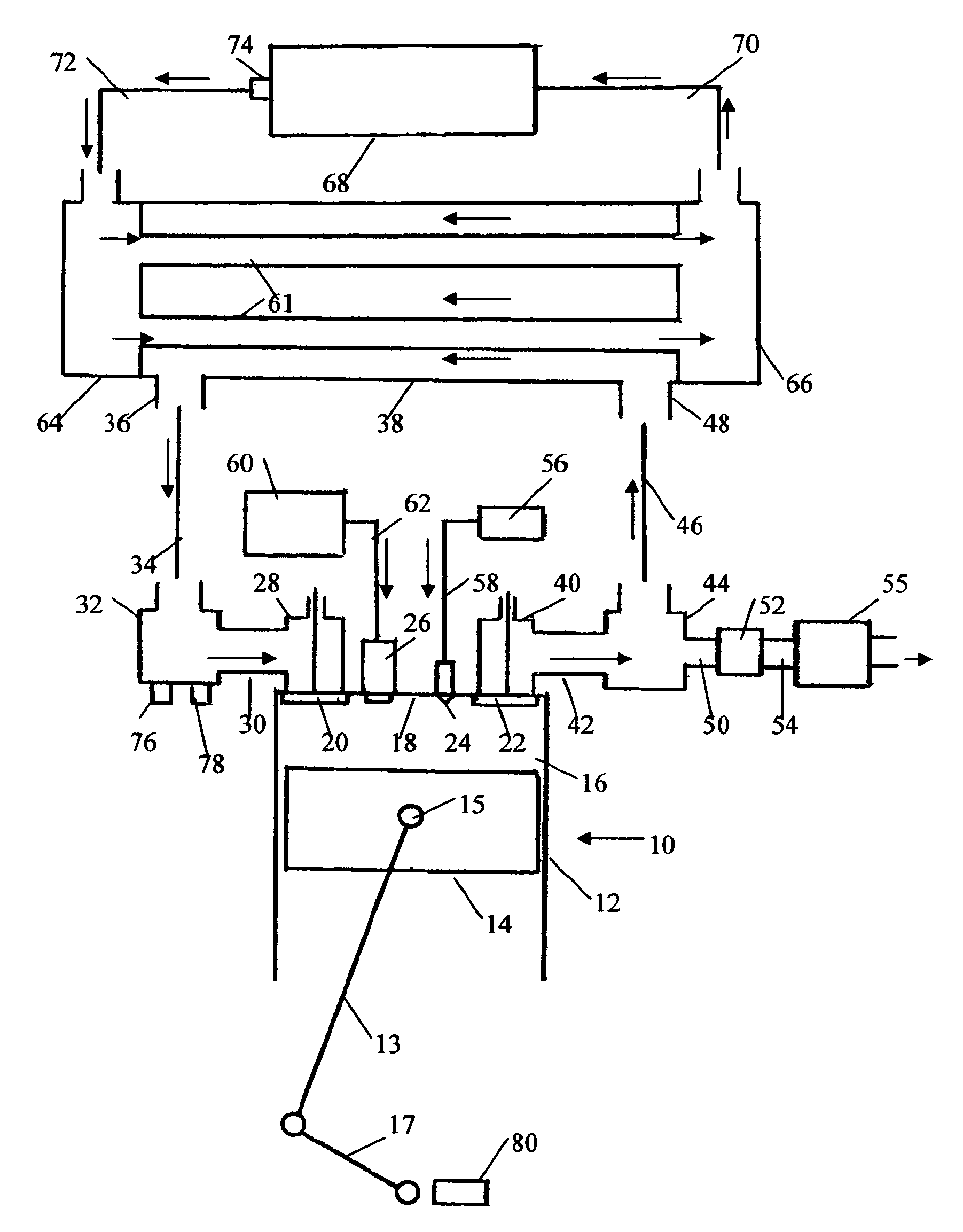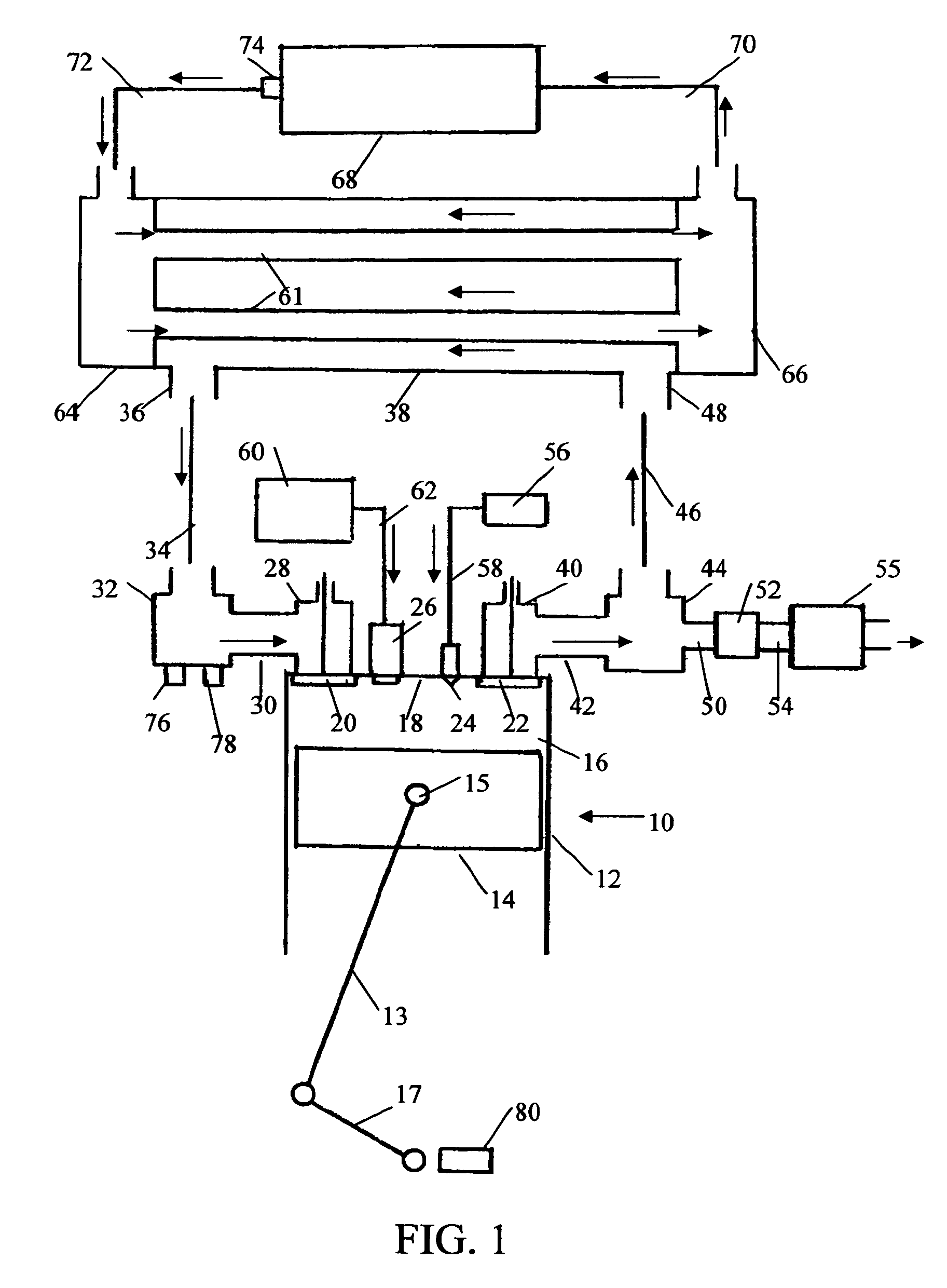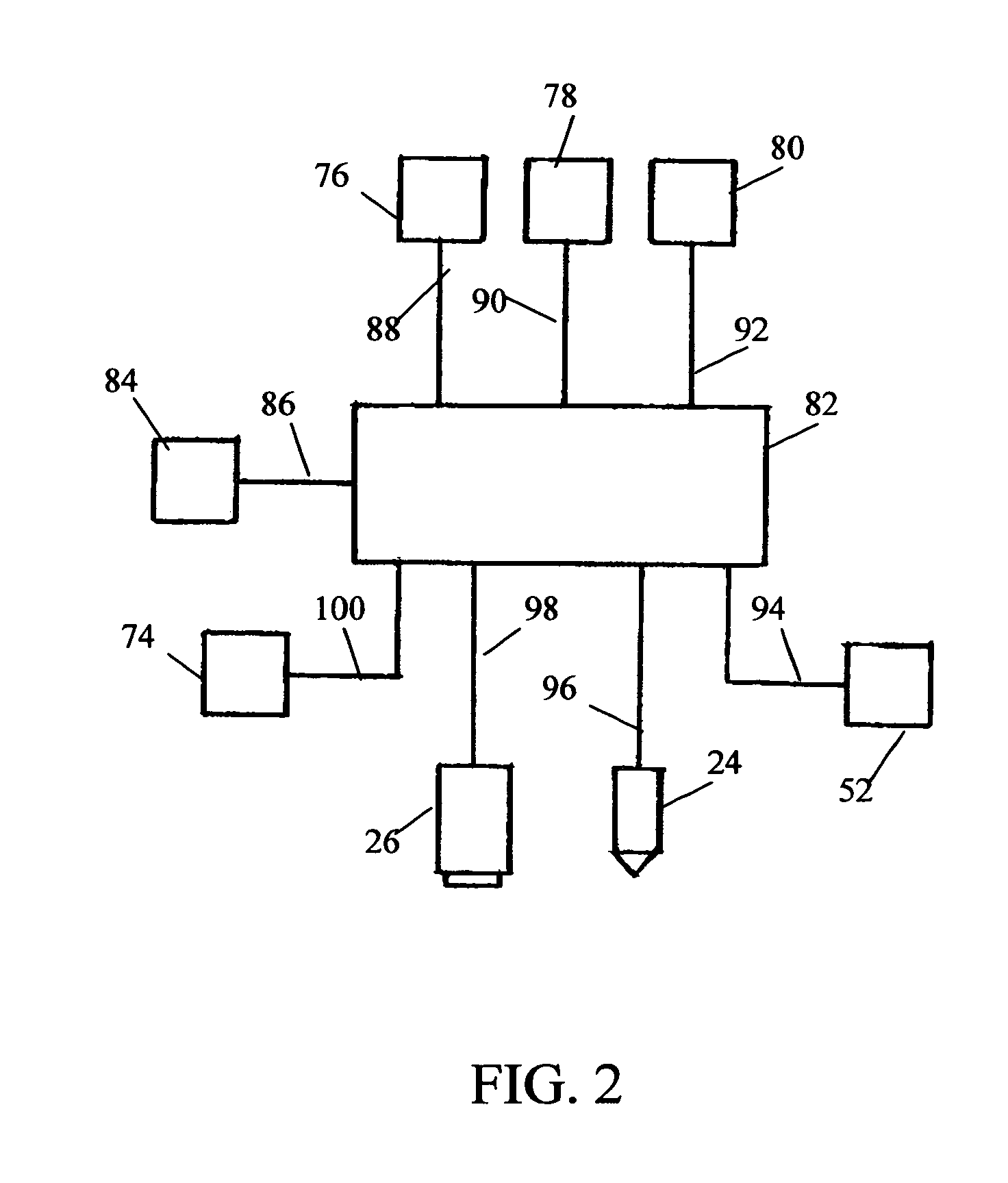Airless engine
- Summary
- Abstract
- Description
- Claims
- Application Information
AI Technical Summary
Benefits of technology
Problems solved by technology
Method used
Image
Examples
Embodiment Construction
[0050]The present invention can be applied to piston-type engines and to rotary-type engines such as gas turbines.
1. Piston-Type Engines
[0051]A preferred embodiment of the present invention, as applied to a piston-type engine, is illustrated in FIGS. 1 and 2. FIG. 1 is a schematic, cross-sectional side-view of an engine cylinder and head arrangement and its connections to sources of fuel and oxygen and to a combustion-gas cooler. An engine 10 has at least one such cylinder. A cylinder 12 contains a piston 14, which is mounted upon a connecting rod 13 by a wrist pin 15 and can reciprocate in cylinder 12, thus varying the volume of a cylinder chamber 16 enclosed between piston 14 and a cylinder head 18 attached to the top of cylinder 12. Motion of piston 14 and of connection rod 13 is transmitted to crankshaft 17.
[0052]Two types of normally-closed valves, an intake valve 20 and an exhaust valve 22, are installed in cylinder head 18. The valves are operated by conventional means, such ...
PUM
 Login to View More
Login to View More Abstract
Description
Claims
Application Information
 Login to View More
Login to View More - R&D
- Intellectual Property
- Life Sciences
- Materials
- Tech Scout
- Unparalleled Data Quality
- Higher Quality Content
- 60% Fewer Hallucinations
Browse by: Latest US Patents, China's latest patents, Technical Efficacy Thesaurus, Application Domain, Technology Topic, Popular Technical Reports.
© 2025 PatSnap. All rights reserved.Legal|Privacy policy|Modern Slavery Act Transparency Statement|Sitemap|About US| Contact US: help@patsnap.com



